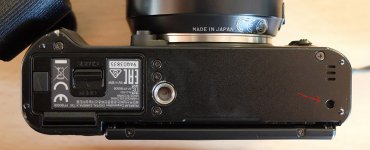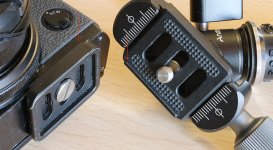I’m wondering if the problem actually doesn’t lie with the plates themselves but with the screw recess located on the camera !
in many cases you are probably right.
There are two possible reasons for this.
I) Too great a tolerance in the internal screw thread compared to the male thread of the attachment.
2) Play of the thread component in the camera base.
In the past most female threads were cut into the main frame of the camera and was solid. Today the thread is often into a plate which is in turn held by three or four minute screws into the base of the camera sometimes only into the camera base or cover plate.
When movement is possible at the junction between two parts then screws can also wriggle loose. as they rely on constant pressure and friction to stay locked.
If a mounting plate can revolve to and fro even slightly on the base, this is also causing the screw to rotate, it is then inevitable that the screw will loosen.
L Brackets often have lips or pins to prevent the camera base being able to rotate in relation to the bracket. This is inherently more stable than relying on screw pressure alone. With such an arrangement it is rare for screws to loosen.
Many lens plate and camera mounting plate rely on friction alone to prevent rotation. as
@Jelster has found this is often insufficient with regard to heavier equipment.
Interestingly most Cine cameras have a standardised pin recess built in to the camera base. to stop this rotation. you will find that a number of Camera mounting plates and tripods have a sprung loaded matching pin for this purpose. however few if any Still cameras comply with this standard.
On many Fuji X cameras. they include a register pin hole to locate with their own hand grips, as seen on my XT30 below.
However very few L bracket manufacturers have ever made use of it. My own generic bracket uses a peripheral lip to encompass much of the base in preference.
Fuji XT30 base.





